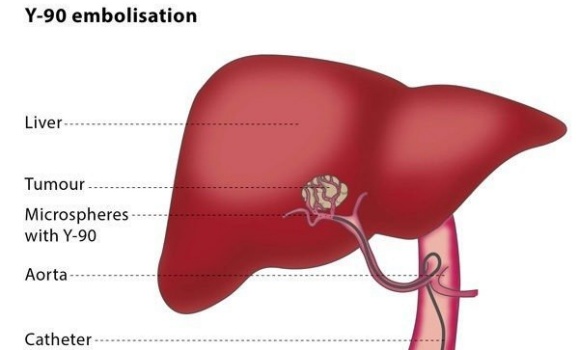News
» Go to news mainPost‑administration dosimetry in yttrium‑90 radioembolization through micro‑CT imaging of radiopaque microspheres in a porcine renal model

New publication from Dr. Robert Abraham, Dr. Kimberly Brewer and Dr. George Mawko.
Abstract
The purpose of this study is to perform post-administration dosimetry in Yttrium-90 radioembolization through micro-CT imaging of radiopaque microsphere distributions in a porcine renal model and explore the impact of spatial resolution of an imaging system on the extraction of specific dose metrics.
Following the administration of radiopaque microspheres to the kidney of a hybrid farm pig, the kidney was explanted and imaged with micro-CT. To produce an activity distribution, 400 MBq of Yttrium-90 activity was distributed throughout segmented voxels of the embolized vasculature based on an established linear relationship between microsphere concentration and micro-CT voxel number.
This distribution was down-sampled to coarser isotropic grids ranging in voxel size from 2.5 to 15 mm to emulate nominal resolutions comparable to those found in Yttrium-90 PET and Bremsstrahlung SPECT imaging. Dose distributions were calculated through the convolution of activity distributions with dose-voxel kernels generated using the GATE Monte Carlo toolkit. Contours were computed to represent normal tissue and target volumes.
Dose-volume histograms, dose metrics, and dose profiles were compared to a ground truth dose distribution computed with GATE. The mean dose to the target for all studied voxel sizes was found to be within 5.7% of the ground truth mean dose. D70 was shown to be strongly correlated with image voxel size of the dose distribution (r2 = 0.90). D70 is cited in the literature as an important dose metric and its dependence on voxel size suggests higher resolution dose distributions may provide new perspectives on dose-response relationships in Yttrium-90 radioembolization.
This study demonstrates that dose distributions with large voxels incorrectly homogenize the dose by attributing escalated doses to normal tissues and reduced doses in high-dose target regions. High-resolution micro-CT imaging of radiopaque microsphere distributions can provide increased confidence in characterizing the absorbed dose heterogeneity in Yttrium-90 radioembolization.
Recent News
- Dr. Abraham receives CAIR Award
- Thank you to everyone who joined us for the 30th anniversary Radiology Research Day on May 8th!
- Nova Scotia’s Lung Screening Program expanding to Cape Breton, eastern mainland
- Donor‑supported nuclear medicine technology attracts top medical talent to the QEII
- Building Critical Skills at the Dalhousie Physician Leadership Workshop for Women in Radiology
- CAR/CSTR Practice Guideline on CT Screening for Lung Cancer
- CAR/CSACI Practice Guidance for Contrast Media Hypersensitivity
- CAR Practice Guideline on Bone Mineral Densitometry Reporting: 2024 Update
